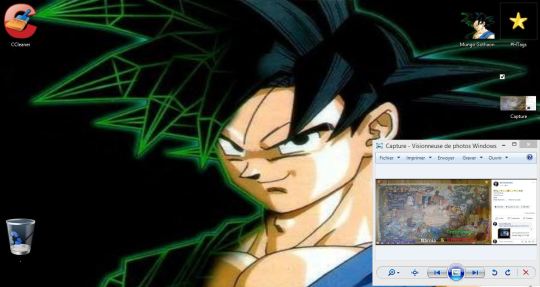#Jean Mazzella
Text
Falaises
Chemin de Bas Fort-Blanc, 1885, Elodie La Villette
Toujours au musée de Fécamp, la ville au cœur de la côte d’Albâtre, entre Le Havre et Dieppe, au nord du Pays de Caux, appelée ainsi du fait de ses falaises blanches, quelques tableaux de falaises justement. Une suite à la série sur les peintres et la Normandie.
Elodie La Villette représente ici les falaises à Dieppe à marée basse, avec les…

View On WordPress
#Abbé Narcisse Denis#brai (calfatage)#Côte d&039;Albâtre#Dieppe#Elodie La Villette#Emile-Louis Vernier#Etretat#Eugène Le Poittevin#Fécamp#Hôtel Blanquet (Etretat)#Henry Bacon#Jean Mazzella#Jules Diéterle#Jules Noël#Le Havre#Michel Bouquet#Paul Morchain#Paul-Félix Vallois#Pays de Caux#Yport
0 notes
Text
Les Italiens de Porquerolles
La présence d’ouvriers italiens débute probablement avec la création de l’usine de soude. Parmi leurs descendants encore présents, il y a la famille de Paul Desiglioli et, d’après Jean Ridolfi, il est probable que sa famille soit venue s’installer en 1840 pour être employée dans cette fabrique. Il y a également la famille Grimaud dont nous avons parlé au sujet de la fabrique de soude.
L’acquisition de Porquerolles par François-Joseph Fournier est suivie de nombreux travaux : agrandissement de la cave, plantations de vigne et d’arbres fruitiers, parmi beaucoup d’autres choses. Pour occuper les différents postes à pourvoir, M. Fournier fait appel aux Italiens, qui sont réputés pour leur sérieux. L’une de ces tâches était la fabrication de charbon de bois, notamment pour alimenter l’usine électrique. Parmi ces hommes, se trouvaient Joseph Basignana et Jean Ciapi, dont les familles sont toujours présentes sur l’île. De nos jours (2020), il reste quelques chemins forestiers, avec ou sans issue, qui permettaient aux forestiers de pénétrer dans les bois et d’ériger des charbonnières.
Voici maintenant l’histoire de la famille Goglia. En 1896, Silverio Goglia décide de rejoindre ses cousins à Marseille, qui serait un eldorado. Parti de l’île de Ponza, petite île entre Rome et Naples, avec sa femme et ses deux enfants, Silverio Goglia longe la côte dans son petit barquet à voile. Après un bref arrêt familial à Menton, ils décident de poursuivre leur route. Stoppés dans leur élan par un coup de mistral, ils se réfugient dans la baie du Langoustier où ils sont recueillis par les gens de la ferme du Langoustier. Au village, ils rencontrent les familles Mazzella, ce qui leur donne l’occasion de parler leur langue maternelle : le napolitain. Ces derniers mettent en garde M. Goglia : l’accueil de nouveaux Italiens à Marseille est très incertain ; cependant ils lui font remarquer que rien ne l’empêche de s’installer dans l’île et d’y pratiquer son métier de pêcheur de langoustes.
Concernant les familles Mazzella, voici une mise au point de Charlotte, la femme de Roger Mazella : il y a un Mazzella avec deux z et un autre avec un seul. En fait, c’est à la suite d’un enregistrement par l’état civil français qu’une famille va perdre un z. Toutefois, même si ces familles sont originaires de Ponza, elles n’ont aucun de lien direct de parenté.
Avant d’entamer le sujet suivant, voici la présentation d’une partie de la famille Goglia. À leur arrivée à Porquerolles, Pierre, l’aîné, avait sept ans et aura plusieurs enfants, dont Mayou. Tado, le second, qui avait quatre ans lors de l’installation de la famille, aura Loulou et Nénin. Ce dernier a été cité dans le sujet sur la douane.
0 notes
Photo



#Quand..#Jean..#René...#Casimir...Girard Mazzella...me..Appel..de..Toutes..#Urgence..Je..#Grogne..et..Lui..procure..le..#Ki..Du...#kaio-ken....:
#Personne..Ne..Nous...Arrêteras..:
Meme..Le..#Jumeau..du..#Cancer..:
#Saga.-.#Afriica...Aussi..:
Encore..saga...#Lui..et/ou..##Louis..il..le..peut..mais..c'est..bien..le..seul:
https://www.youtube.com/watch…
#Voilà..Maintenant..vous-savez...tout-tout..de..moi..;
Dit-donc..c'est..jours..#Diane.#allah..Tv..Fourvières..Show..j'ai..vu..#Alice...#Manu..#Gaelle
et..Tata-#Lucie
Jojo.&.Bamby..Princesse..#GIGI.
0 notes
Text
Bicycles and bans are reshaping the city
THE quayside roads that wind along the Seine used to throb with hurtling traffic. Today, potted palm trees have been ranged along the tarmac. Joggers and cyclists enjoy the waterside calm. On a stretch of the right bank opposite the Eiffel Tower formerly used as a convenient express route, cars have been squeezed into a single lane, leaving the other to bicycles. Over the centuries, the French capital has been the backdrop to many warring tribes. Today’s conflict pits contemporary urban combatants: enraged car owners, and everybody else.
A sense of siege is keenly felt by the capital’s motorists. Anne Hidalgo, the Socialist mayor, is waging “a war against cars”, said Le Monde earlier this year. Parisians, says Pierre Chasseray of “40m Motorists”, a lobby group, are “living in daily hell”.
As part of the town hall’s plan to increase the share of trips taken by bicycle from 5% to 15% by 2020, protected cycling routes are being extended along some of the city’s main arteries. An entire lane on the busy Rue de Rivoli is being converted into a two-way bike route. The left bank’s quayside road was closed to cars in 2013, six years after the city installed a bike-sharing scheme. Inevitably, until habits change (assuming that they ever do), traffic on those roads still open to vehicles is now more clogged than ever.
Paris is “not anti-car, but anti-pollution”, retorts Jean-Louis Missika, the head of planning at city hall and a deputy to the mayor. Small-particle pollution levels in the city are particularly high. With its narrow medieval streets and its 19th-century boulevards, the transport reformers seek above all to discourage cars that do not carry passengers. Fully 80% of vehicles circulating in central Paris carry only one person, and 79% of those on its roads are privately owned, according to the town hall. On September 14th BlaBlaCar, a French ride-sharing startup, launched BlaBlaLines, a new app designed to help commuters in the Greater Paris region organise carpooling with a couple of clicks. With 1.2m commuting trips of over 10km (six miles) made each day in outer Paris, there is “massive potential” to curb the number of empty cars, says Frédéric Mazzella, the firm’s boss.
Ms Hidalgo’s crusade against motorists is partly political. She governs Paris in a coalition with the Greens, who hold the transport portfolio. Her detractors say she is in thrall to “hipsters on bicycles”. But it is also part of a broader rethink of how the city should adapt to an age that will be shaped by electric vehicles and driverless transport. “It’s a revolution that will be as great as the transition from horse-drawn carriages to the motor car,” says Mr Missika. He expects to authorise the first experimental driverless six-person taxis in Paris next year, and claims that city hall will ban privately owned cars (as opposed to ones that are leased) in the centre by 2025-30. On current plans, diesel cars will be banned altogether from Paris by 2020. (London, by contrast, has nothing nearly as ambitious in place, though surcharges for older diesel models will come into effect in the centre of the city from next month. The mayor, Sadiq Khan, is reportedly planning to extend this to the whole city.)
The spread of electric, and in time driverless, vehicles means that Paris is not heading towards a post-car future. When it comes to making cycling the norm, the city still lags far behind others in Europe, such as Copenhagen or Amsterdam. A far bigger effort to invest in public transport may ultimately have a greater impact on car use, as well as help to spread jobs and businesses outside the city centre. The Grand Paris Express, Europe’s biggest infrastructure project at a cost of some €30bn ($36bn), is a new fast train under construction that will link outer Paris with its airports, stadiums and universities in a figure-of-eight around the city. With four new lines and 68 stations, it is due to be in full service in 2030. A big stretch of each of the four lines should be open by 2024, in time for the city’s hosting of the Olympic games.
This article appeared in the Europe section of the print edition under the headline "A driverless Paris?"
http://ift.tt/2ws7noj
0 notes
Text
France Digitale wants to teach French parliament members about tech
New Post has been published on http://secondcovers.com/france-digitale-wants-to-teach-french-parliament-members-about-tech/
France Digitale wants to teach French parliament members about tech
(adsbygoogle = window.adsbygoogle || []).push();
France Digitale presented its roadmap for the upcoming 12 months. France Digitale is an association that acts as a lobbying organization when it comes to defending the interests of the startup community in France. And the organization had a couple of new things to announce.
Rachel Delacour first introduced the event. She is now co-president with Jean-David Chamboredon. Today, the association is launching the France Digitale Campus, a six-month training for members of the National Assembly and Senate learn about technology and the digital economy.
While Emmanuel Macron’s presidential victory led to a big renewal of the National Assembly, there are still some parliament members who don’t really get technology. For instance, back in 2009, then Minister for Culture Christine Albanel said that French citizens should protect their home internet connection with the ‘OpenOffice firewall’.
“Members of the National Assembly who we have interacted with, in particular those in the finance commission, didn’t really get venture capital, hyper growth or business angels,” France Digitale Vice President Olivier Mathiot said — he’s in charge of this project.
“For this reason, we started talking about this France Digitale Campus idea with Fleur Pellerin back when she was in charge of digital affairs,” he added. A few years later, France Digital Campus is now more than just an idea.
Shop On SecondCovers
Details are still thin, but France Digitale is aware that parliament members won’t simply take a six-month sabbatical to go back to school. That’s why it won’t be a full-time job. The organization wants to collaborate with startups to make parliament members interact with a startup in their own office for a little bit. This way, they could realize what it feels like when you create a startup in France.
“We will start with a proof of concept, a small batch of 10 to 20 people,” Mathiot said. “For now, most parliament members are part of [Emmanuel Macron’s party] La République En Marche but we want more diversity with members from other parties.”
France Digitale is also starting another long-term project. The organization wants to become a professional organization in order to create collective agreements for tech companies.
“It’s a very ambitious project, and it’s unclear if France Digitale is going to be a professional organization in 2020,” co-president Jean-David Chamboredon said. So don’t hold your breath for this, but the association is looking at different ways to make this happen.
In other news, BlaBlaCar CEO Frédéric Mazzella is now Vice President and France Digitale ambassador in Europe. Finally, France Digitale Day is going to happen on September 25th in the Musée des Arts Forains.
0 notes